In this review, we are going to look at the TP-Link TL-SH1832. This is another fun one from a reader tip. This switch has the lowest per-port 2.5GbE cost that we can find, especially in a higher-port count configuration like this. There are, however, a few major catches that will either make some more determined to get one, or remove it from consideration.
TP-Link TL-SH1832 Video
Since we thought this is one that we thought the YouTube audience would enjoy as well, Alex made a video that is about a third shorter than our normal video length:
As always, we suggest watching this in its own browser, tab, or app for the best viewing experience. Also, if any of our readers are STH YouTube members, thank you. That helped us buy this unit for review.
TP-Link TL-SH1832 External Overview
The switch itself is a 1U rackmount switch. We took the photos without the included rack ears, but this switch includes rack ears that you can see in the video. It can also be used with rubber feet as a desktop unit. On the left of the switch, we get the status LEDs for the 32 ports.
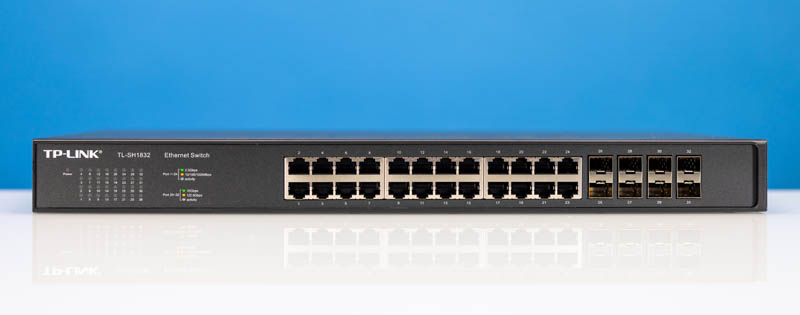
The 24 ports are all 2.5GbE and 1GbE ports. We tested at those speeds, but they are supposed to also work at 10M/100M speeds. The eight SFP+ cages we tested at 10GbE speeds, but have status LEDs for 2.5GbE and 1GbE speeds, but not 5GbE.
On the side of the case, we get a vent, and rack ear mounting. The only rack ear mounting option is on the port side of the switch.
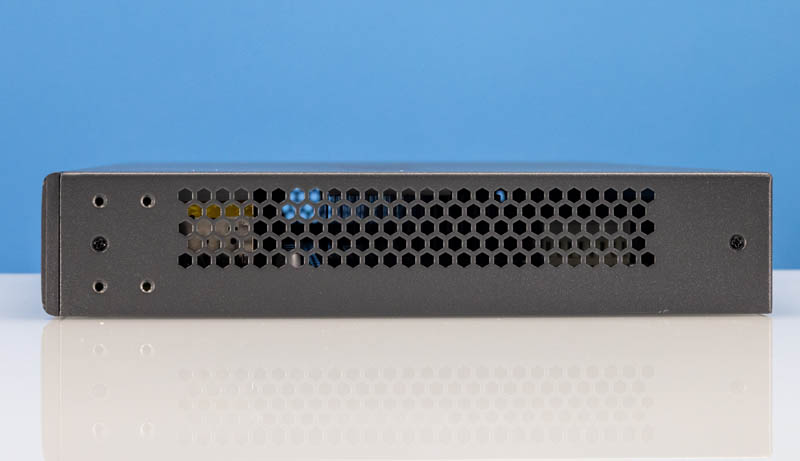
On the other side of the switch, we have another vent.
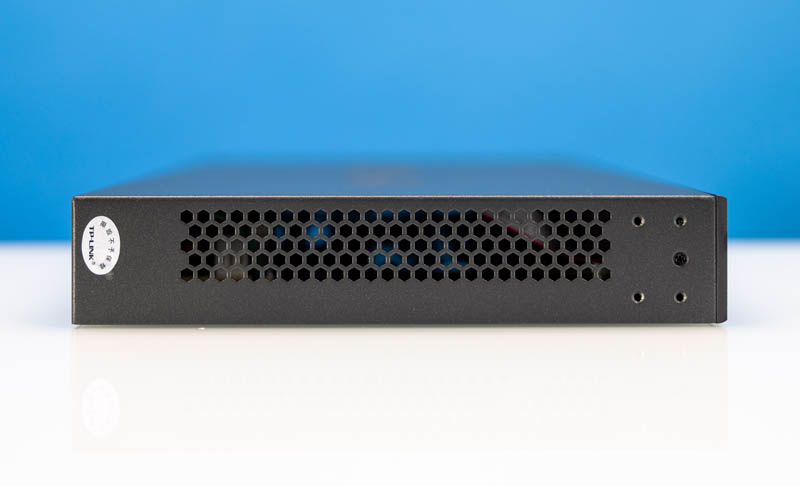
On the rear of the switch, we just have the grounding point and the AC input.
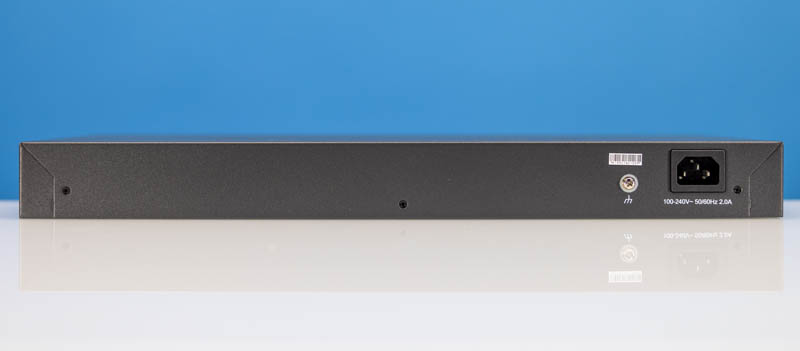
The switch does not have FCC, UL, or many of the other markings we typically see on switches that are sold and deployed in the US. There is a big buyer beware element to this type of device that we will address more in our key lessons learned section.
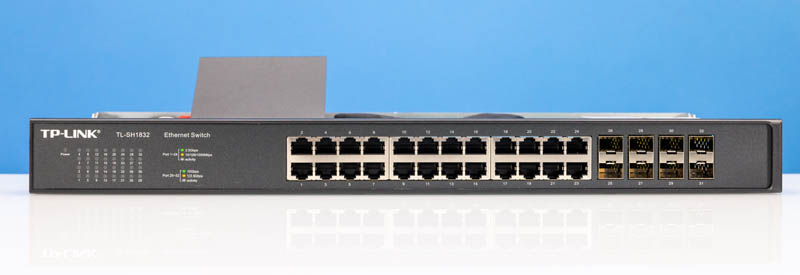
This is very simple hardware on the outside, but let us look inside the switch.

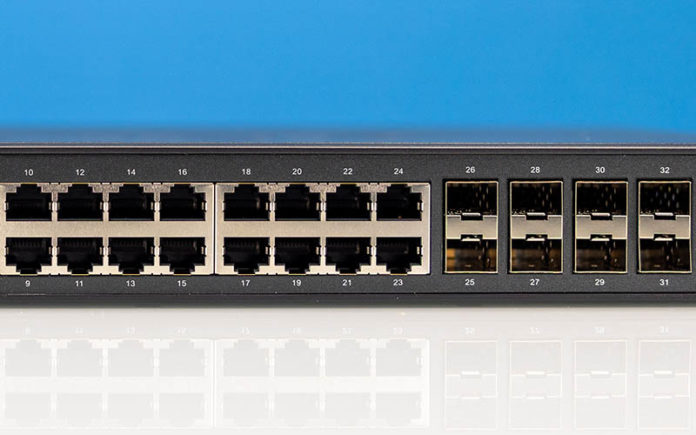

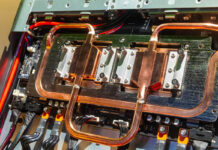

This is quite an interesting switch for the right application. Maybe Video Workstations with shared storage. The fact its a “dumb” switch really limits its potential for lots of home lab configurations. Still it nice to see 2.5G/10Gb mixed ports. Seems like 1Gb has been the default for so long now. Easily 15 years now.
Suddenly I wonder how the performance graph is measured. Is there a place where the testing methodology is explained?
What happens if all 2.5Gbit ports try to send data to one of the 10Gbit ports simultaneously? Do they each get a fair share of bandwidth? Are packets dropped? What about average and tail latency? What is the longest round trip when the switch is loaded?
What happens if each 2.5Gbit port is paired with another 2.5Gbit and each 10 Gbit port is paired with a 10Gbit port and bidirectional communication bandwidth measured between the pairs? What about tail latency in this case?
What happens if each port as simultaneously as possible sends data in turn to all of the others? Is this much different than the case when the data flows only between pairs of ports?
Given the equipment and switches available, it would be great to develop some tests that might characterize performance between switches in a more distinctive way.
I wonder if, like many other cheap unmanaged switches, if the switch ASIC actually has the capability but there’s just no management card installed. I couldn’t get a good look at the PCB to see if that might be the case.
The lack of fans jumped right out at me from the first edge-on photo. I’d screw this vertically to a backboard in a closet and trust it to convect just fine, but laying flat? Nah. That’s too much heat for comfort.
It looks like it’d be trivial to stick some fans in the case, though. And since it has massive heatsinks, they could be slow quiet fans indeed, and spaced back from the grille to reduce noise, while still getting the job done.
Interesting! Thank you for the article, I would love to see this in greater depth. Also, can you reach out to TP-Link for comment about the market segmentation?
10GbE switches haven’t come to consumers because manufacturers are colluding. These cost no more than 1GbE switches. It’s all a scam to extract more profits.
Is there a cheap “managed” version of this switch available in China?
Why is 2.5GbE and multi-GbE so expensive in the U.S.? Price fixing/colluding between networking companies.
This is the same nonsense pulled by the memory companies on multiple occasions in the U.S. over the last several decades, and it’s being pulled by GPU manufacturers at the moment as well.
Why sacrifice profits when you and your 1-2 competitors can all agree to keep prices artificially high?
i wish Metgear made a layer 2+ managed of this switch with 300W of PoE with 4 SFP+ cages
@Glen : For 10GbE it remains this patent : https://patents.google.com/patent/US7164692B2/en which expire this year by july so after that the cost by port for a switch with 10GbE ports will be more affordable
MikroTik please make this managers with PoE60
@flo With the way Google has been acting and performing, I wouldn’t be surprised if they draw some aspirin tablets onto the diagrams, claim it’s actually a pharmaceutical product and argue they should be granted an extended period of market exclusivity.
C’mon guys, do a proper review.
What is the Network SoC?
Is this really unmanaged or does it have ‘lite’ management?
Proper throughput testing?
They didn’t name the network chip but if you’re being fair, they’ve said they didn’t see anything on Wireshark, and a management interface would be easy to see. They also did throughput testing to the level anyone using an unmanaged switch would care about since they’ve shown it’s at least non-blocking. STH isn’t perfect, but you’ve gotta be fair.
uzman77 – the fact that this has 2.5GbE ports implies it is aimed at the consumer/prosumer market. There’s loads of problems with 2.5GbE NICs. Would be nice to do throughput testing with NICs, SFP+ transceivers etc
STH has done this in the past – for example with SFP+ transceivers where – to paraphrase you, it did as you say ‘throughput testing to the level where anyone wanting basic NBase-T would care’. (https://www.servethehome.com/sfp-to-10gbase-t-adapter-module-buyers-guide/) People who purchased on the basis of that got burned when the SFP+ transceivers turned out to be highly directional in throughput
@WB the patent is owned by Intellectual Ventures, not by Google.
I hope prices drop quickly after July 18th 2023.
Curious as to the Network SoC and other ICs on board
Now…
Make it managed
Have POE++ on at least 4 ports
POE+ on the rest and We’ve got a deal.